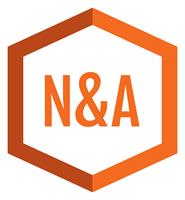Change Fails Without Them: How to Engage Your Stakeholders (Part 2 of series of 6)
What Does Stakeholder Engagement Really Mean?
Engaging stakeholders isn’t just about informing them. It’s about inviting them into the process early enough that they feel ownership, not obligation. It means identifying the right voices across the organization, those with influence, expertise, and credibility, and involving them in a way that’s meaningful and practical.
Because when people feel heard, they lean in. When they’re excluded, they dig in.
The 4 Essentials of Stakeholder Engagement
1. Map the Right People
Stakeholders aren’t just executives. They’re frontline leaders, culture carriers, trusted skeptics, and cross-functional partners. Think broadly.
2. Involve Them Early and Authentically
Bringing stakeholders in after the major decisions are made signals that their input isn’t valued.
3. Address Concerns, Not Just Questions
Stakeholders aren’t barriers, they’re barometers. If they’re raising concerns, pay attention.
4. Equip and Empower Them
Stakeholders can’t advocate for what they don’t understand. Provide tools, talking points, context, and clarity.
Stakeholder Engagement is a Form of Hospitality
When done right, engaging stakeholders is about more than alignment, it’s about respect and trust. Just like in hospitality, you’re creating an experience: one where people feel seen, included, and respected. That emotional foundation creates commitment, and commitment is what sustains momentum when things get hard.
How We Help
At HR Consulting by Nelson & Associates, we help leaders build stakeholder strategies that reduce resistance, increase ownership, and improve results.
We support you in:
- Identifying key stakeholders across departments and levels
- Designing meaningful engagement moments and structured feedback loops
- Facilitating stakeholder sessions that balance candor with alignment
- Coaching leaders on how to listen, adapt, and still move forward
- Equipping sponsors with the tools to lead through influence—not just authority
In Part 3, we’ll move into Aligning the Organization, how to make sure your structure, systems, and strategy all support the change you’re working so hard to implement.
Let’s build change that includes the people who matter most.
The Team at HR Consulting by Nelson & Associates
HR Consulting by Nelson & Associates
-
Eric Nelson President & Founder
- July 29, 2025
- (503) 887-4414
- Send Email
